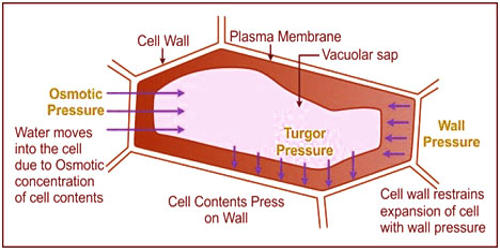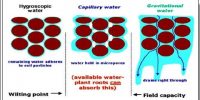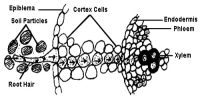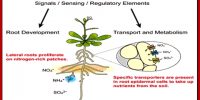Wall pressure (W.P.)
Wall pressure is the pressure exerted on the contents of a plant cell by the cell wall that is equal in force and opposite in direction to the turgor pressure. The cell wall when stretched fully (due to turgidity), also exerts a counter-pressure on the fluid contents of the cell is said to be the wall pressure At turgid condition the turgor pressure is equal to the wall pressure.
WP or wall pressure is the force exerted by the cell wall against the Turgor pressure and hence it’s magnitude depends on the magnitude of the Turgor pressure and the nature of the cell wall. The hydrostatic pressure developed inside the cell on the cell wall due to endosmosis is called turgor pressure. Due to turgor pressure, the rigid cell wall offers resistance. This resistance, which works in a direction opposite to the turgor pressure but is equal in strength to the turgor pressure, is called wall pressure. Wall Pressure is the pressure exerted on the contents of a plant cell by the cell wall that is equal in force and opposite in direction to the turgor pressure.
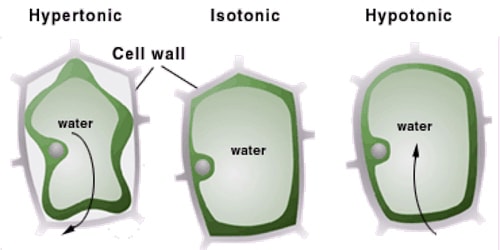
Wall pressure (WP) basic characteristics
- It is the force exerted by the wall against the expansion of the osmotic system.
- Wall pressure occurs in a confined system.
- It is the resistance, the wall holds over the expanding osmotic; system and is, therefore, dependent upon TP or Ѱp as well as the nature of the wall
- It is commonly equal and opposite to TP or Ѱp.
- Wall pressure prevents the bursting of cells and limits expansion.
- Reduction of wall pressure is required for the growth of cells.
